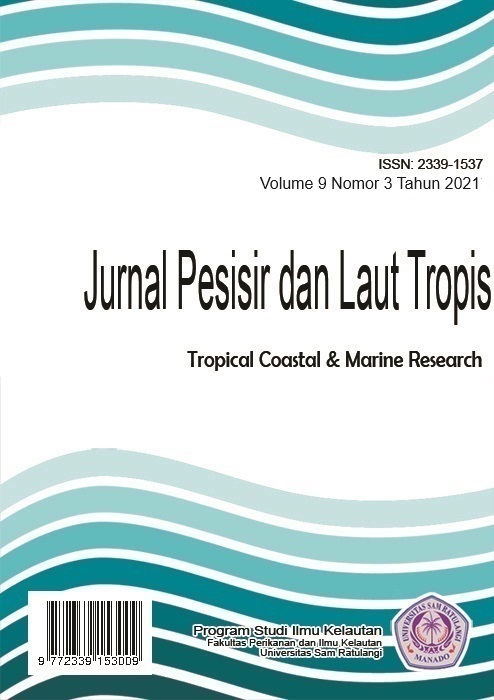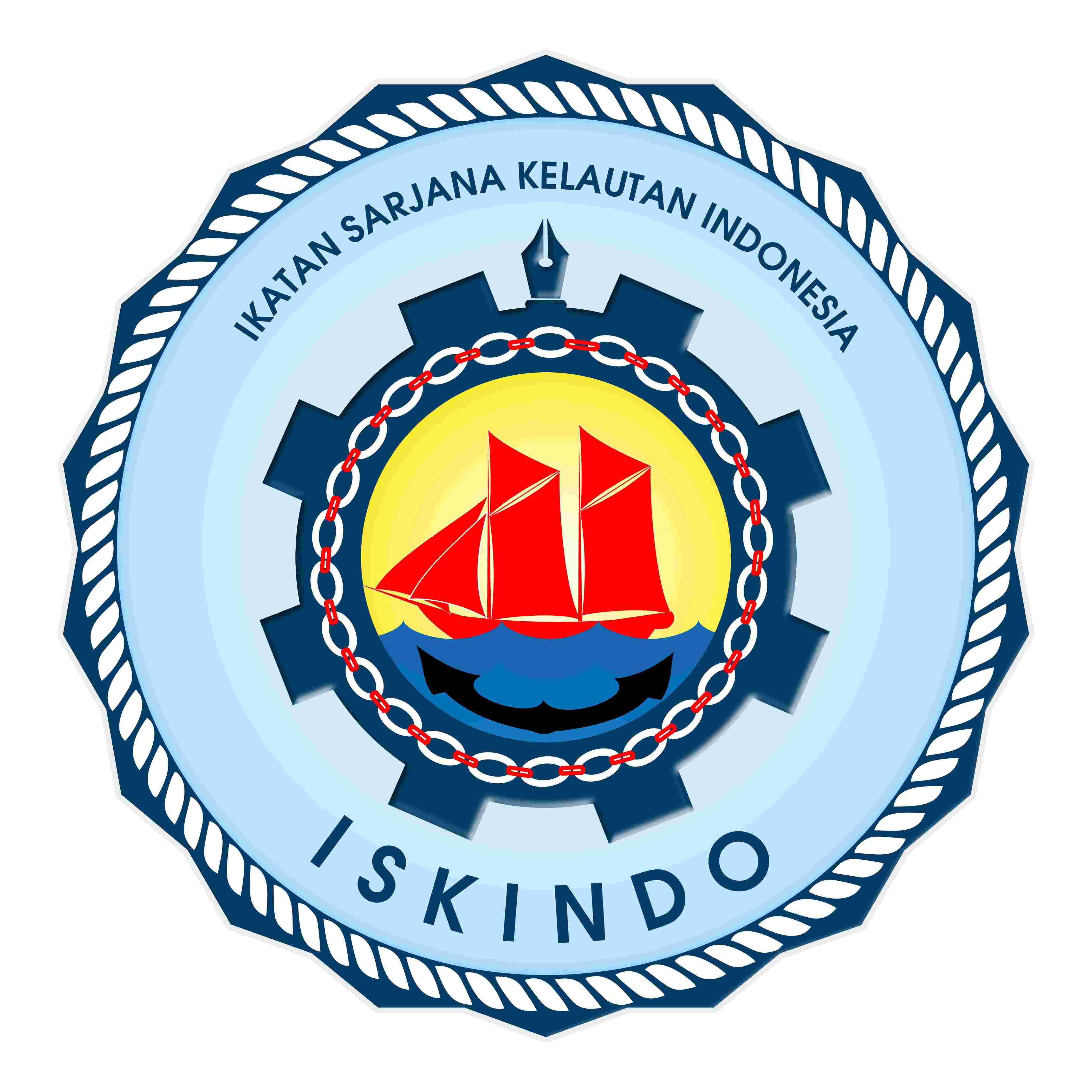STRUKTUR KOMUNITAS MANGROVE GAMLAMO, KECAMATAN JAILOLO, HALMAHERA BARAT, PROVINSI MALUKU UTARA
DOI:
https://doi.org/10.35800/jplt.9.3.2021.36489Abstract
Mangrove is one of coastal plants that have many benefits both to the environment and society. Mangroves can be found growalong the coast and influenced by tides. This research conducted in Gamlamo Village, Jailolo Sub-district, West Halmahera Regency, North Maluku Province. The purposes of this study were to determine the mangrove community structure and identify mangroves species in Gamlamo Village. The method used in this research was line transect method. There are 3 stations established onthis research area and each station has two line transects, so the total line transect are six. Moreover, within each line transect five quadrants (10 x 10 cm2) were laid. This study found that at three stations in the research area, there were three mangrove species Rhizophora mucronata, Sonneratia alba and Bruguiera gymnorrhiza. The highest density value was found at station 2 of R. mucronata 0,36 ind/m2 and the relative density value was 60%. The highest frequency was found at station 2, belong to R. mucronata 1 ind/m2 and the relative value was 41,67%. The highest dominance wasfound at station 1 of S. alba 52,89 m2 and dominance relative 53,31%. For the highest important value index was at station 2, of R. mucronata with a value of 136,57% and the found at station 3 B. gymnnorrhiza. The highest diversity index (H’) 1,03 was found at station 1 while the lowest 0,95 was at station 2.
Keywords: Gamlamo Village, Mangrove, Community Structure
















